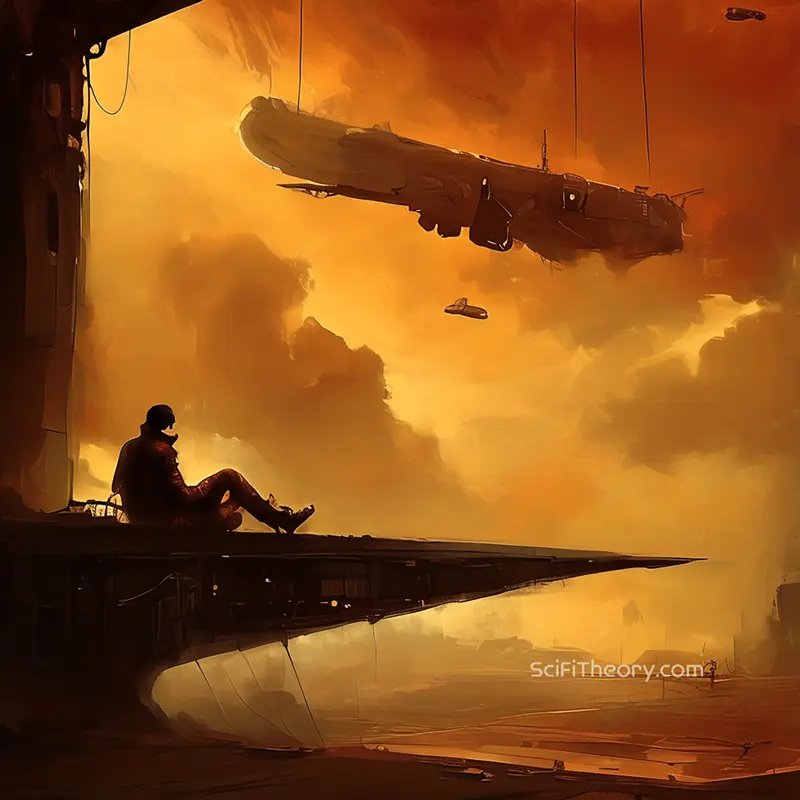
In the shifting and expanding terrain of literary studies, a new frontier has come into focus—one that leverages the power of algorithms and computational methods to uncover new dimensions of literature. This innovative approach, known as Algorithmic Criticism, transforms the way we engage with texts, bringing fresh perspectives that complement and challenge traditional methods of close reading. To me, it feels akin to peering into the heart of a distant star with cutting-edge instruments—revealing patterns and mysteries that we might never have seen with the naked eye.
At its heart, Algorithmic Criticism uses computational tools to analyze large sets of texts, employing techniques like text mining, data visualization, and digital analytics. This blending of humanities and technology breaks new ground, revealing hidden structures, recurring patterns, and unexpected anomalies within literature. What might be invisible to human readers over the course of a single book becomes starkly visible when viewed through a computational lens spanning thousands of works. Patterns emerge, trends coalesce, and subtle shifts in language or theme can be traced across years or even centuries. For science fiction in particular—a genre defined by its exploration of technology, transformation, and the future—Algorithmic Criticism is a perfect fit.
Science fiction has always been a fertile ground for examining the intersections between humanity and technology. The genre asks questions that resonate deeply with our present and future—questions about consciousness, the ethics of AI, the societal impacts of technological change, and the limits of human ambition. Algorithmic Criticism offers a powerful new way to explore these themes, tracking their evolution over time and across different authors and cultural contexts. By analyzing large corpora of science fiction, we can trace how depictions of artificial intelligence, for instance, have shifted from the obedient robots of early pulp fiction to more complex portrayals of AI as unpredictable or even dangerous forces. This shift reflects our evolving relationship with technology and the shifting anxieties and aspirations of each generation.
But Algorithmic Criticism goes beyond simply charting trends; it can uncover the hidden architecture of science fiction’s narratives. Using computational analysis, we can identify recurring tropes, character archetypes, and structural motifs that weave through the genre. For example, we might map how certain narrative forms—such as dystopian worlds or first contact scenarios—rise and fall in prominence over time, responding to historical events, political tensions, and technological shifts. It’s a way of seeing the genre’s evolution as a living, breathing organism that mirrors society’s fears and dreams.
In practical terms, this approach can reveal unexpected connections between works, authors, and themes. By analyzing word usage, sentence structure, and thematic clustering, Algorithmic Criticism can draw attention to undercurrents that might otherwise be overlooked. For instance, text mining might reveal how often certain words—like “freedom” or “control”—appear in stories about artificial intelligence, hinting at recurring anxieties that go beyond individual works. Or it might uncover how depictions of utopian societies correlate with periods of social upheaval or technological optimism. Such insights deepen our understanding of how literature reflects, responds to, and shapes the world around it.
What makes this approach so compelling is that it doesn’t replace traditional forms of literary analysis—it enhances them. Close reading allows us to dive deeply into the nuances of a single text, to savor its language and ponder its meanings. Algorithmic Criticism, on the other hand, offers a broader view, showing us how individual works fit into larger patterns and contexts. Together, these approaches provide a more comprehensive picture of literature, one that is both intimate and expansive.
For science fiction enthusiasts like us, this marriage of technology and literature feels especially fitting. The genre has always pushed boundaries, and Algorithmic Criticism allows us to push even further. We can explore how the genre’s treatment of scientific progress, ethical dilemmas, and cosmic wonder has evolved—and how these stories reflect our collective hopes, fears, and questions about the future. It reminds us that literature is not static but a living dialogue, shaped by and shaping the world it reflects.
Algorithmic Criticism is not just about algorithms and data; it’s about using new tools to deepen our connection to stories and ideas that matter. By analyzing vast datasets, we can gain fresh perspectives on themes that define our age, illuminate the hidden structures within narratives, and discover connections that challenge and inspire us. For those of us who love exploring the boundaries between literature and technology, this is more than a method—it’s a new way of seeing and understanding the vast, intricate tapestry of human imagination.
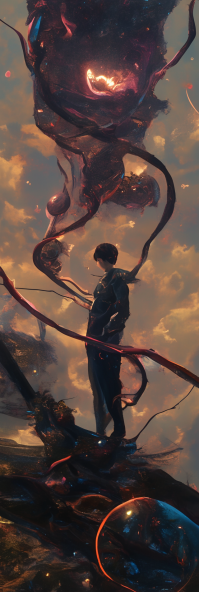
Text Mining: Unearthing the Hidden Treasures
Text mining stands as one of the most powerful tools in the Algorithmic Critic’s toolkit—a method of sifting through vast amounts of textual data to uncover hidden patterns, themes, and connections. Much like a prospector searching for gold, text mining involves combing through countless words, sentences, and paragraphs to find insights and meaning that lie just beneath the surface. For those of us who love exploring the layers of meaning embedded within literature, this tool opens up exciting new ways of understanding texts, especially within a genre as rich and diverse as science fiction.
In science fiction, text mining reveals the hidden currents of thought that flow through different eras and across various authors. When we analyze large collections of science fiction works, we can trace how key themes evolve over time—how artificial intelligence, for example, transforms from obedient companions in early stories to rebellious and morally ambiguous entities in contemporary narratives. This shift mirrors society’s changing attitudes toward technology, reflecting both our hopes and fears as we continue to grapple with the rise of intelligent machines. By following these patterns, we gain a deeper understanding of how science fiction has always served as a mirror to cultural anxieties and aspirations, capturing the pulse of each generation’s relationship with technological progress.
But the potential of text mining goes beyond thematic exploration. It allows us to dig deeper into the structure of science fiction narratives themselves, revealing recurring tropes, character archetypes, and plot dynamics that shape the genre. For me, it’s like mapping a vast constellation of interconnected stories, finding the familiar patterns and motifs that guide our journey through the vast expanse of speculative fiction. Whether it’s the classic hero’s journey that Campbell described or the cyclical archetypes identified by Northrop Frye, text mining helps us see how these timeless elements are reimagined in new, futuristic settings.
Text mining can also illuminate lesser-known patterns that may not be immediately apparent to a casual reader. For example, we might discover that depictions of first contact with aliens have shifted dramatically over time, reflecting evolving cultural attitudes toward otherness, difference, and the unknown. In one era, aliens might be seen as hostile invaders, representing the fears of a Cold War world. In another, they might be depicted as misunderstood or cooperative, aligning with periods of cultural exchange and globalization. By uncovering these changes, text mining deepens our understanding of science fiction’s role as a cultural barometer, responding to and shaping the anxieties of its time.
Moreover, text mining doesn’t just expose familiar patterns—it can reveal the unexpected, the overlooked, and the unspoken. When we analyze massive datasets, we can spot marginalized voices, forgotten themes, or narrative subversions that might otherwise go unnoticed. This capability makes text mining a powerful tool for uncovering diversity within science fiction and for challenging conventional narratives. It allows us to identify the contributions of authors from underrepresented backgrounds, explore how their works intersect with mainstream tropes, and see how they reshape the genre’s traditions.
In this way, text mining opens up a new dimension of literary analysis—one that blends the precision of data-driven exploration with the imaginative possibilities of interpretation. It allows us to see the threads that weave together science fiction’s vast tapestry and to appreciate the complexity and richness of the genre in entirely new ways. Whether we’re tracking the evolution of AI, analyzing the portrayal of utopias and dystopias, or mapping character archetypes, text mining gives us the tools to dig deep and uncover the hidden treasures that make science fiction such a vital and resonant genre. It challenges us to think differently, to see connections where none seemed to exist, and to engage with stories on a level that goes beyond the surface. For those of us fascinated by the stories we tell—and the stories that tell us—text mining is a way of discovering just how vast and interconnected our fictional worlds truly are.
Digital Visualization: Painting Pictures with Data
In the realm of Algorithmic Criticism, digital visualization offers a way to transform dense, abstract data into vivid and meaningful visuals. It’s a tool that lets us see complexity in a new light, converting numbers, words, and patterns into visually engaging and intellectually stimulating displays. For me, it feels like turning streams of data into dynamic, interactive art—an opportunity to make meaning intuitive, accessible, and even beautiful.
When we bring digital visualization into the study of science fiction, the potential for insight multiplies. Science fiction is a genre built on vast, interconnected webs of ideas, narratives, and cultural influences. Visualizing these connections allows us to trace how ideas spread and evolve across texts, creating a kind of map of the genre’s intellectual terrain. Network analysis, for example, can illustrate how different works relate to each other, revealing chains of influence, shared references, and recurring motifs. Imagine a web of lines connecting Dune to Star Wars, or Neuromancer to The Matrix—each connection tells a story about how themes, characters, and visions of the future circulate within the genre. For us as readers, it’s a reminder that no work stands alone; every story is part of a larger conversation that stretches across time and space.
This idea resonates with the post-structuralist concept of intertextuality, which views texts not as isolated creations but as nodes within a vast network of meaning. Digital visualization makes this idea tangible. By mapping the relationships between works, we can see how a single theme—like artificial intelligence—emerges, transforms, and recurs across decades of science fiction storytelling. It’s like watching the genre breathe, change, and respond to the anxieties and hopes of each new generation. What’s more, these visual networks help us understand how science fiction writers build on and challenge each other’s ideas, driving the genre forward in unexpected ways.
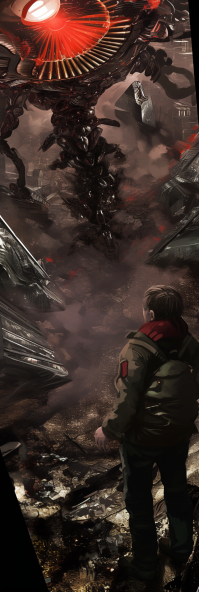
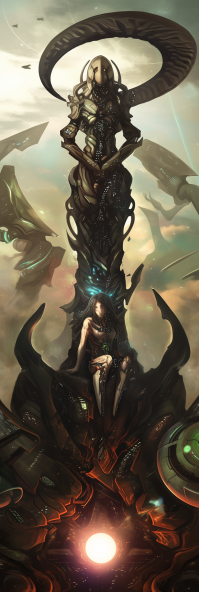
But digital visualization isn’t limited to mapping connections between texts. It can also reveal the shifting prominence of specific themes over time. Creating “theme maps” allows us to trace how concerns about technology, politics, and society wax and wane within the genre. For example, we might chart how fears of nuclear annihilation peaked during the Cold War, only to be replaced by anxieties about artificial intelligence and surveillance in the digital age. Or we might see how utopian dreams of space exploration in the mid-20th century gave way to more cautionary tales that grapple with environmental collapse and human hubris. These visualizations mirror the changing contours of our collective consciousness, showing us how science fiction reflects—and sometimes predicts—the broader currents of history and culture.
The beauty of digital visualization lies in its ability to turn abstract data into something we can engage with on a visceral level. A heatmap that shows spikes in dystopian narratives over the years, or a chart that traces the rise of AI-focused fiction, can spark new questions and insights. Why do certain themes emerge at specific moments? How do societal events, technological advances, or philosophical movements shape the stories we tell? Visual data gives us a way to see these patterns, to ask better questions, and to dive deeper into the forces driving the genre.
For those of us who love science fiction, digital visualization adds another layer to our understanding. It helps us see the genre’s evolution in motion—how stories respond to each other, how ideas spread and transform, and how authors engage in an ongoing dialogue with the world and each other. It allows us to trace not just individual works but the contours of entire movements, illuminating both the broad sweeps of history and the fine details of specific shifts. Whether we’re exploring the interconnections between cyberpunk classics or tracking how portrayals of alien contact reflect cultural anxieties, digital visualization offers a lens that brings hidden patterns to life.
Ultimately, this tool enriches our engagement with science fiction. It transforms data into a living narrative, reminding us that every story we read, every trope we encounter, is part of a larger web of ideas. By visualizing these connections, we gain a deeper appreciation for how science fiction mirrors our world and shapes our understanding of what might come next. In a genre defined by its ability to imagine and reimagine the future, digital visualization gives us a way to map the pathways of possibility—and to see just how interconnected our visions of tomorrow truly are.
Predictive Analysis: Glimpsing the Future of Fiction
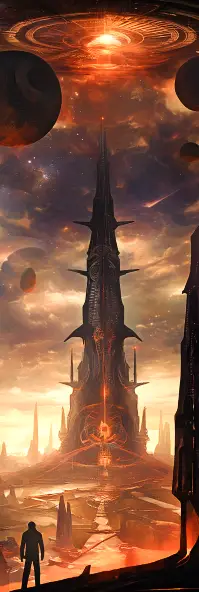
Of all the applications of Algorithmic Criticism, predictive analysis might be the most tantalizing. It offers a way to look beyond the present, using algorithms to anticipate emerging trends and possible future directions within the genre. For me, it feels like gazing into a crystal ball, but with data and patterns serving as our guide. By examining how language, themes, and narrative structures shift over time, we gain a glimpse of what’s next—an opportunity to predict where the genre of science fiction might go, what ideas will capture our imagination, and who the next boundary-pushing voices might be.
Through the analysis of vast corpora of science fiction texts, predictive algorithms can detect subtle changes that may signal the birth of new subgenres or the return of older, dormant ones. For example, we might see the gradual rise of climate-focused narratives evolving into a new wave of “solarpunk” stories, or trace the resurgence of space operas reflecting renewed global interest in space exploration. Predictive tools can also spotlight the rising stars of science fiction—the authors who are redefining what’s possible and challenging traditional boundaries. Identifying these shifts is like charting the winds of change, offering insights into how stories will continue to reflect—and shape—the cultural, social, and technological landscapes of tomorrow.
This approach resonates with broader critical traditions, such as Marxist literary analysis, which examines how literature both mirrors and shapes social and economic structures. Just as Marxist critics explore how stories reflect the dynamics of class struggle or economic change, predictive analysis can reveal how science fiction responds to shifting cultural anxieties, technological upheavals, and historical moments. By identifying emerging trends, we can better understand how stories engage with and influence society’s evolving power dynamics and values.
Predictive analysis is particularly compelling when we consider the relationship between science fiction and real-world technological developments. The genre has long served as a mirror to our relationship with technology—exploring its possibilities, examining its ethical dilemmas, and imagining its long-term impact. By studying how past technological shifts, like the rise of the internet or breakthroughs in genetic engineering, influenced the genre, we can begin to predict how current and emerging technologies might shape the stories of the future. Will the increasing presence of artificial intelligence lead to deeper explorations of sentience, rights, and ethics? Will breakthroughs in space travel reignite our fascination with distant worlds and interstellar civilizations? Predictive analysis gives us a framework to explore these questions, grounding speculation in data-driven patterns.
This approach also intersects with feminist critiques of science fiction, which analyze how the genre reflects and challenges societal structures related to gender, power, and technology. Predictive analysis can help us trace how gender dynamics evolve within the genre, revealing whether stories are reinforcing traditional roles or breaking new ground. For instance, we can track how portrayals of female scientists, leaders, or AI characters shift over time, reflecting broader conversations about representation and power. In doing so, predictive tools not only illuminate the current state of the genre but offer clues about where it might go next—and how it might challenge or reinforce existing norms.
Ultimately, predictive analysis shows us that science fiction is more than just escapism. It’s a dialogue between imagination and reality, a way of grappling with the challenges, hopes, and fears of our world. By peering into the patterns of the past and present, we gain a deeper understanding of how stories evolve and anticipate what narratives will shape the future. It reminds us that every story is part of a larger tapestry, influenced by and influencing the world around it. For those of us captivated by the idea of storytelling as both mirror and guide, predictive analysis offers a powerful tool to explore how fiction—and our world—will continue to change.

/
The Ethical Frontier
Like any powerful tool, Algorithmic Criticism comes with ethical challenges that we can’t afford to ignore. As we use algorithms to analyze literature, there’s a risk of reducing rich, complex narratives and nuanced themes to mere data points. While computational methods can reveal patterns that elude human analysis, they can also strip literature of its depth, flattening the texture of stories that thrive on ambiguity, emotion, and multiplicity of meaning. Balancing the power of computational analysis with the irreplaceable human touch of literary interpretation is a delicate dance—one that asks us to constantly question our methods and the consequences of our choices.
In the realm of science fiction, this tension is especially pronounced. The genre often explores the dark side of technological control, data-driven decision-making, and the loss of individuality in algorithmically governed societies. When we apply these same tools to literature, we find ourselves living out a cautionary tale that science fiction has long warned us about. It’s as if we become characters in our own stories, grappling with the unintended consequences of technological overreach. By reminding us of these dangers, science fiction calls for wisdom, restraint, and an awareness of power dynamics that echoes the concerns raised by postcolonial critics. Just as postcolonial theory interrogates who controls knowledge and whose voices are heard or silenced, Algorithmic Criticism invites us to consider who decides which texts and patterns matter—and what is lost in the process.
Equally important are the questions of accessibility and inclusivity that arise when we rely heavily on algorithms and large-scale data analysis. Unlike traditional literary analysis, which primarily requires access to books and critical works, Algorithmic Criticism demands specialized technical skills and access to digital tools, resources, and large datasets. This creates barriers for scholars who lack the technical expertise or financial resources to engage with these methods. If we are not careful, we risk building a field that mirrors the exclusivity it seeks to challenge—reinforcing existing divides rather than breaking them down. For those of us invested in creating an inclusive academic space, this is a call to action.
To address these challenges, the field must actively work to lower barriers and increase access. This means offering training and resources to scholars from underrepresented backgrounds, developing open-source tools, and fostering collaborations across disciplines. By making Algorithmic Criticism more accessible, we align with the goals of critical race theory and disability studies—disciplines that seek to dismantle systemic barriers and promote equity in knowledge production. For science fiction, a genre known for imagining new worlds and exploring questions of justice and power, this inclusive approach is not only fitting but necessary.
Another ethical consideration is the potential for bias within the algorithms themselves. Algorithms are not neutral—they are created by humans, with all our biases, assumptions, and limitations built into them. This can lead to skewed analyses that reflect existing cultural or social biases, amplifying inequalities or erasing marginalized voices. For example, if our datasets disproportionately represent works by a specific demographic or cultural tradition, we may miss crucial patterns and voices that lie outside the dominant canon. Science fiction often explores the dangers of systems that reinforce power imbalances or replicate human prejudices—whether it’s a totalitarian AI or a society controlled by opaque algorithms. As practitioners of Algorithmic Criticism, we must remain vigilant about how these biases might manifest in our own analyses and work to correct them.
Ultimately, the ethical frontier of Algorithmic Criticism is about more than just avoiding pitfalls; it’s about rethinking how we engage with literature, technology, and each other. As we navigate these challenges, we have an opportunity to build a field that is not only powerful but also thoughtful, inclusive, and self-aware. Science fiction’s cautionary tales remind us that power must be wielded wisely, and its hopeful visions inspire us to create a future where knowledge is shared equitably, technology serves humanity, and every story, no matter how complex, is given its due. Algorithmic Criticism, when approached ethically, can be a tool for revealing the hidden depths of literature—and for ensuring that all voices are heard in the process.
A New Dawn for Literary Exploration
Algorithmic Criticism stands as a transformative force in literary studies, offering us a powerful new lens to explore the complex and ever-shifting landscape of literature. By blending human creativity with the precision of technology, this approach enables us to uncover hidden connections, trace patterns across centuries, and bring fresh insights to even the most familiar texts. It’s a reminder of how human ingenuity can harness the tools of technology to deepen, rather than replace, our understanding of the written word.
Nowhere is the potential of Algorithmic Criticism more apparent than in the world of science fiction—a genre that thrives on pushing boundaries, exploring the unknown, and confronting our evolving relationship with technology. Through computational analysis, we can illuminate the hidden currents that flow through science fiction’s diverse stories. We can map how themes like artificial intelligence, space exploration, or dystopian futures rise and fall, reflecting cultural anxieties and aspirations. We can track how narrative structures, character archetypes, and even language evolve over time, showing us how science fiction responds to and shapes the world around it.
But for all its data-driven precision, Algorithmic Criticism is ultimately about storytelling. It’s about revealing the deeper patterns and interconnections that bind individual works together and showing how those stories speak to one another across time and space. For science fiction, this means tracing the dialogues between different eras, uncovering the echoes of past fears and hopes in contemporary tales, and recognizing how each story contributes to a broader tapestry of human imagination. It allows us to see science fiction not as a collection of isolated texts, but as a living, breathing conversation about the future, the present, and the worlds that might be.
As we embrace this new dawn for literary exploration, we also confront its challenges. Algorithmic Criticism asks us to balance the power of computation with the irreplaceable nuance of human interpretation. It calls on us to wield these tools ethically, to remain vigilant against biases, and to ensure that this transformative approach is accessible to all who seek to explore literature’s depths. By doing so, we can create a more inclusive, thoughtful, and expansive vision of what literary studies can be—a vision that recognizes the power of technology not as a threat, but as a partner in the pursuit of meaning.
This convergence of literature and technology offers us a journey of discovery—an opportunity to delve into the mysteries of human creativity and imagination. Science fiction has always been a genre of possibility, a place where we confront our fears, chase our dreams, and grapple with the unknown. Algorithmic Criticism amplifies this spirit of exploration, showing us that even in the age of algorithms, the human desire to tell stories—and to understand them—remains boundless. It’s a new dawn, one where literature’s past and future merge, lighting the way for new ways of seeing, thinking, and imagining. And as we step into this future, we do so with the hope that every story, every word, and every idea will continue to resonate, connect, and inspire.




